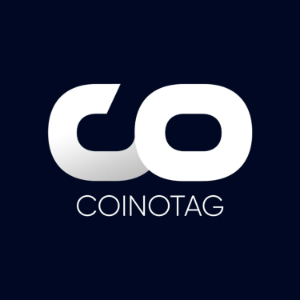Ethereum’s Crucial Path: Unveiling Fusaka Upgrade Adjustments and the Glamsterdam Hard Fork
7 min read
BitcoinWorld Ethereum’s Crucial Path: Unveiling Fusaka Upgrade Adjustments and the Glamsterdam Hard Fork Are you plugged into the pulse of the crypto world? If so, you know that Ethereum , the second-largest cryptocurrency by market capitalization, is constantly evolving. Its journey is marked by a series of meticulously planned upgrades, each designed to enhance its scalability, security, and sustainability. Right now, all eyes are on the upcoming Fusaka upgrade and the highly anticipated Glamsterdam hard fork , which promise to bring significant shifts to the network’s architecture. Understanding these developments is crucial for anyone navigating the dynamic landscape of blockchain development. What’s Shaking Up the Fusaka Upgrade? The Fusaka upgrade has been a hot topic among Ethereum developers, and recent discussions have led to a notable adjustment. The initial plans included a specific proposal known as EIP-7907 , which aimed to introduce contract code size limits. However, in a move reflecting the iterative nature of blockchain development, developers have decided to remove EIP-7907 from the Fusaka upgrade for now. This means that for the time being, the current contract code size limits will remain unchanged. Why the Change? The decision to pull EIP-7907 from Fusaka isn’t a rejection of the idea itself, but rather a strategic deferral. Developers often prioritize stability and thorough testing, and sometimes a proposal requires more refinement or a different context to be safely implemented. This cautious approach is a hallmark of responsible blockchain development . Impact on Users: For everyday users and dApp developers, this specific change means no immediate alteration to how smart contracts are deployed or their size limitations on the network with Fusaka. It simplifies the immediate upgrade path, focusing on other critical improvements without adding new complexities at this stage. EIP-7907’s Future: Eyeing the Glamsterdam Hard Fork While EIP-7907 won’t be part of Fusaka, it’s far from being discarded. Ethereum developers are already considering a revised version of this proposal for the subsequent major network upgrade: the Glamsterdam hard fork . This approach allows for continued research and development on the proposal, ensuring that any future implementation is robust and well-integrated into the broader Ethereum roadmap. This commitment to continuous improvement underscores the foresight in the network’s evolution. What does this mean for the future of contract development on Ethereum? It signals a commitment to optimizing network resources and potentially introducing new efficiencies. The careful consideration of EIP-7907 for the Glamsterdam hard fork demonstrates the developer community’s dedication to long-term network health and performance, always balancing innovation with stability. The Ethereum Roadmap: Devnets and Testnets in Motion The journey towards these significant upgrades involves several crucial stages of testing and refinement. For the Fusaka upgrade , the next major milestone is the launch of Devnet-3, scheduled for July 23. Devnets are internal testing environments where core developers can experiment with new features and identify potential issues in a controlled setting. Following this, public testnets are slated to roll out between late August and mid-October. These public testnets are vital for broader community participation, allowing dApp developers, node operators, and researchers to test their applications and infrastructure against the new changes before they go live on the mainnet. This phased approach to blockchain development is a hallmark of the Ethereum ecosystem, ensuring that upgrades are deployed with the highest possible degree of security and stability. It reflects a cautious yet progressive mindset, prioritizing the integrity of the decentralized network and building confidence in its future. What’s Next for the Glamsterdam Hard Fork? Beyond Fusaka, the spotlight quickly shifts to the Glamsterdam hard fork . Key decisions regarding the scope and content of this next major upgrade are anticipated within the next 2–4 weeks. This period will be critical as developers finalize the list of Ethereum Improvement Proposals (EIPs) that will be bundled into Glamsterdam. The decisions made during this time will significantly shape the future capabilities and performance of the Ethereum network, impacting everything from transaction throughput to new feature sets. As per a recent Binance Square post , the community eagerly awaits these announcements. The iterative nature of these upgrades, from Fusaka to Glamsterdam, showcases the continuous commitment to enhancing the foundational layers of decentralized finance (DeFi) and Web3 applications. This strategic foresight ensures that Ethereum remains at the forefront of innovation. Understanding Hard Forks and Network Upgrades: Why Are They So Important? For those new to the intricacies of blockchain, terms like “hard fork” and “upgrade” can seem daunting. Here’s a quick breakdown to demystify the process and highlight their importance in blockchain development : Hard Fork: A radical change to the protocol that makes previously invalid blocks/transactions valid, and vice-versa. It requires all participants (nodes) to upgrade their software. If a portion of the network doesn’t upgrade, it creates a separate chain. Ethereum’s upgrades are generally “non-contentious” hard forks, meaning the community broadly agrees on the changes, and everyone upgrades, maintaining network unity. Network Upgrade: A broader term encompassing any significant change or improvement to a blockchain’s protocol. Hard forks are a type of network upgrade, often necessary to implement major feature enhancements or security patches. These planned upgrades are essential for Ethereum ‘s evolution, allowing it to adapt to new technological demands, improve efficiency, and address challenges like scalability and high transaction fees (gas costs). They are the engines driving the network’s progress. Why Do These Upgrades Matter to You? Whether you’re an investor, a dApp user, a developer, or just curious about crypto, these upgrades have tangible impacts on the entire ecosystem: For Investors: Successful upgrades can boost network efficiency and utility, potentially increasing the long-term value proposition of Ethereum (ETH). Smooth transitions build confidence in the network’s future, signaling a robust and well-managed platform. For Developers: New EIPs introduce new functionalities, tools, and optimizations, enabling the creation of more sophisticated, efficient, and secure decentralized applications. This fosters innovation and expands the possibilities within the Ethereum ecosystem. For Users: While direct changes might not always be immediately apparent, upgrades contribute to a more stable, secure, and potentially faster and cheaper network experience over time. This translates to better dApp performance and reduced transaction costs, making the network more accessible and user-friendly. For the Ecosystem: Each upgrade strengthens Ethereum ‘s position as a leading platform for decentralized innovation, attracting more projects and users, and fostering a vibrant and competitive ecosystem that benefits everyone. Challenges and the Path Forward in Blockchain Development While exciting, blockchain development is not without its challenges. Coordinating thousands of developers across the globe, ensuring backward compatibility, and rigorously testing every change is a monumental task. The decision to defer EIP-7907 from Fusaka highlights this complexity – it’s a testament to the developers’ commitment to caution and thoroughness over rushed implementation, prioritizing the network’s integrity. The path forward for Ethereum involves continuous innovation, community consensus, and meticulous execution. The upcoming Devnets and public testnets for Fusaka, followed by the crucial decisions for Glamsterdam, are all part of this intricate dance, moving Ethereum closer to its vision of a scalable, secure, and sustainable global computing platform. These steps are vital for maintaining Ethereum’s competitive edge and ensuring its longevity. Concluding Summary The world of Ethereum is in a constant state of evolution, driven by a dedicated community of developers committed to its future. The recent adjustments to the Fusaka upgrade , specifically the deferral of EIP-7907 , demonstrate a pragmatic approach to network enhancement, prioritizing stability and careful consideration. With Fusaka Devnet-3 on the horizon and public testnets soon to follow, the community is gearing up for significant changes. Furthermore, the anticipation surrounding the key decisions for the Glamsterdam hard fork underscores the continuous ambition to push the boundaries of what’s possible on the blockchain. These strategic moves are not just technical updates; they are vital steps in fortifying Ethereum’s foundation, ensuring its long-term viability as the backbone of the decentralized internet. Stay tuned as these pivotal developments unfold, shaping the next chapter for one of the most influential blockchain networks in existence. To learn more about the latest Ethereum trends, explore our article on key developments shaping Ethereum’s institutional adoption. Frequently Asked Questions (FAQs) 1. What is the Fusaka upgrade for Ethereum? The Fusaka upgrade is an upcoming planned network upgrade for Ethereum designed to introduce various improvements and optimizations to the blockchain. It’s part of Ethereum’s continuous development roadmap to enhance scalability, security, and overall performance. 2. Why was EIP-7907 removed from the Fusaka upgrade? EIP-7907, which proposed contract code size limits, was removed from the Fusaka upgrade to allow for more refinement and careful consideration. This strategic deferral ensures thorough testing and integration, with a revised version potentially being considered for the later Glamsterdam hard fork. 3. What is the Glamsterdam hard fork? The Glamsterdam hard fork is the next major network upgrade planned for Ethereum after Fusaka. It will introduce further significant changes and improvements to the protocol. Key decisions regarding its scope and included Ethereum Improvement Proposals (EIPs) are expected within the coming weeks, which will define its impact on the network. 4. When will the Fusaka Devnet-3 and public testnets launch? Fusaka Devnet-3 is scheduled to launch on July 23. Following this, public testnets for the Fusaka upgrade are set to roll out between late August and mid-October. These testnets are crucial for developers and the community to test the new features before mainnet deployment, ensuring a smooth transition. 5. How do these Ethereum upgrades impact users and developers? For users, these upgrades contribute to a more stable, secure, and potentially faster and cheaper network experience over time. For developers, new EIPs introduce enhanced functionalities and optimizations, enabling the creation of more advanced and efficient decentralized applications. Overall, they strengthen Ethereum’s position as a leading blockchain platform for innovation. Found this article insightful? Share it with your network and help spread the word about Ethereum’s exciting journey! Your engagement helps foster a more informed and connected crypto community. Let’s keep the conversation going! This post Ethereum’s Crucial Path: Unveiling Fusaka Upgrade Adjustments and the Glamsterdam Hard Fork first appeared on BitcoinWorld and is written by Editorial Team

Source: Bitcoin World



